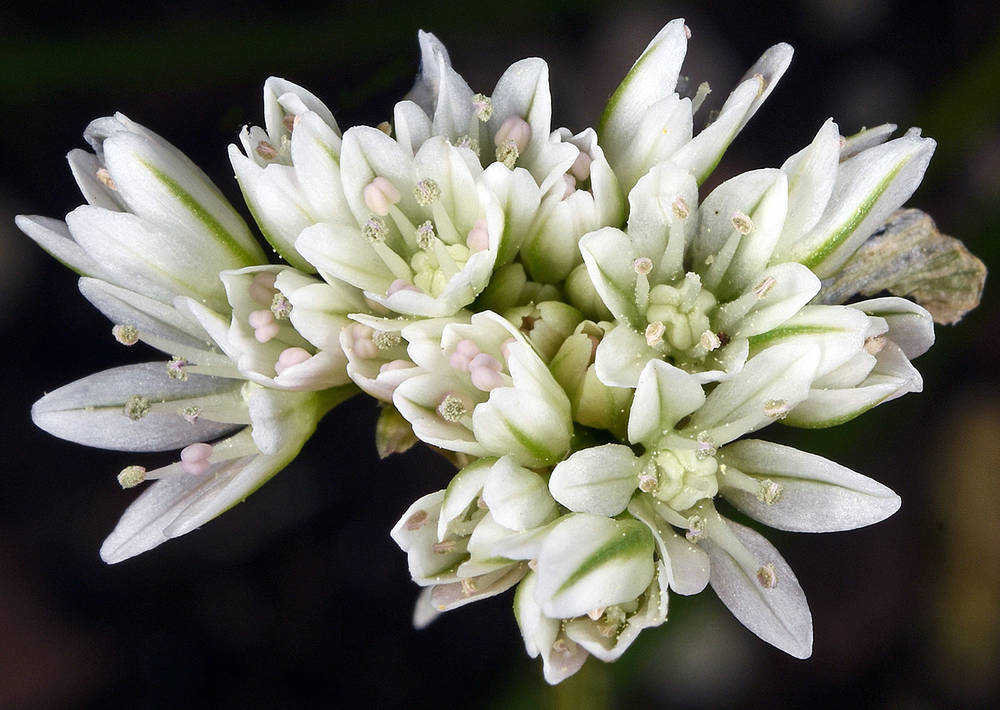Allium madidum
swamp onion
1–3; larger bulbs each usually with cluster of 10–30 easily detached bulbils to one side of base, globose to ovoid;
outer coats enclosing 1 or more bulbs, membranous; without fibers.
persistent, green at anthesis, 2;
blades solid; flat or channeled, 10–25 cm × 1–4 mm.
persistent; solitary; erect; solid; more or less terete, sometimes ridged, 10–20 cm × 1–2 mm.
persistent; erect; compact, 10–20(40)-flowered, hemispheric;
pedicels 5–12 mm;
spathe bracts 2.
6–10 mm;
tepals erect or more or less spreading, white with prominent green or pink midveins, lanceolate; more or less equal;
margins entire;
apex obtuse to acuminate, becoming involute at tip;
stamens included;
ovary crestless or obscurely crested with 3 minute processes;
stigma unlobed or slightly lobed.
=28, 42.
Allium madidum
Open mixed conifer forests, gravelly seeps, seasonally wet meadows and scablands. Flowering May–Jul. 1000–2200 m. BW. ID. Native.
Nick Otting, Richard Brainerd, Barbara Wilson



